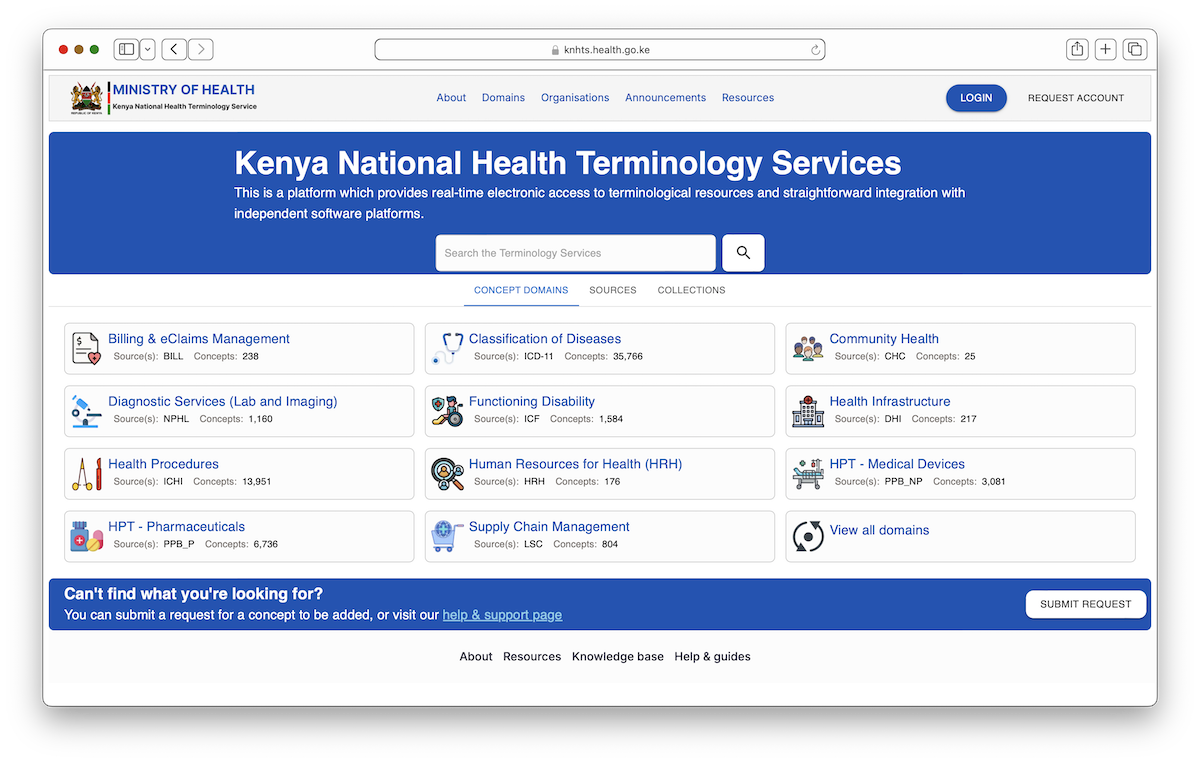Kenya’s health sector has long faced challenges with fragmented data and inconsistent terminology across different health systems. Without a standardized language, health data often lacks the quality and accuracy needed for efficient care and decision making. To address this, the Kenya National Health Terminology Service (KNHTS) was established; the KNHTS is a project aimed at unifying health terminology and improving communication between systems. Lead by the University of Nairobi (UoN), in partnership with UCSF Health Informatics Hub and the Kenya Ministry of Health (MOH), KNHTS is part of the broader Kenya National Health Data Dictionary (NHDD), aligning with the country’s 2023 Digital Health Act.
At the heart of KNHTS is the need for consistent communication across Kenya’s health services. The NHDD ensures that all health information systems speak the same language, making it easier to exchange information between clinics, hospitals and other health institutions. KNHTS serves as a central platform that manages and distributes essential terms and definitions used in healthcare, from clinical diagnoses to laboratory codes and pharmacy terms.
KNHTS provides a standardized resource for national and county MOH teams, technical partners, private institutions and universities. This standardization helps improve data quality, which is key for better health outcomes and the development of targeted public health policies.
The foundation of KNHTS is built on Open Concept Lab (OCL), a global tool for managing health terminology. Following an initial workshop with Health Information System (HIS) partners in August 2023, stakeholders adopted OCL and began customizing it during a hackathon. This hands-on approach allowed the team to tailor the service to meet Kenya’s specific needs.
KNHTS is accessible through a web-based interface that allows users to search the repository using keywords, concept IDs and specific terms. Built with modern technologies like React, Django and PostgreSQL, the system ensures that Kenya’s health sector can stay up-to-date with global standards while keeping the local context in focus.
The development of KNHTS has been a collaborative effort. UCSF and UoN worked closely with the Kenya MOH, alongside key partners like the Regenstrief Institute and major players in Kenya’s health information space, including Palladium, HealthIT and AfyaKe. This teamwork ensured that KNHTS would meet the needs of a wide variety of users, from government bodies like the Pharmacy and Poisons Board to private sector organizations.
The initiative’s sustainability is supported by ongoing partnerships that focus on expanding and maintaining the service. The involvement of key stakeholders, such as Kenya’s Medical Supplies Authority (KEMSA) and Kenya Healthcare Federation (KHF), reinforces the project’s long-term success.
KNHTS has already seen significant uptake in Kenya, with departments like the Pharmacy and Poisons Board and Kenya National Public Health Labs incorporating it into their operations. This progress demonstrates that the system is ready for wider deployment, and it’s expected to become an integral part of the country’s health infrastructure.
By standardizing terminology and improving interoperability across systems, KNHTS is setting the stage for better data quality and more effective healthcare delivery. This initiative serves as a model for other countries looking to strengthen their health data systems, showing how strategic planning and collaborative partnerships can drive digital transformation in healthcare.

